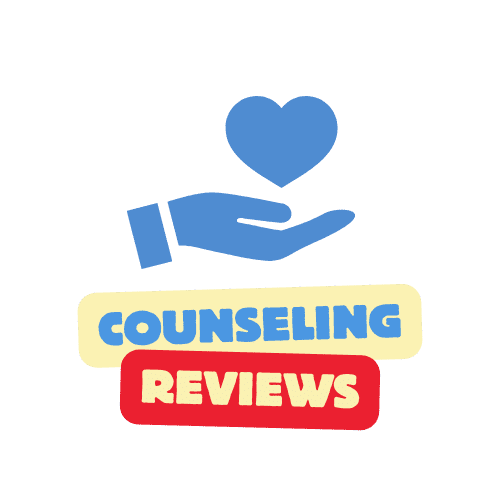The world of post-traumatic stress disorder (PTSD) is complex and wrought with ups and downs. Those with PTSD can go from a state of stability to a state of emotional distress, and fear by the mere presence of a trigger in the environment, all at the drop of a dime. Online therapy networks have emerged in a significant way in the contemporary behavioral health space and seek to offer persons with PTSD a convenient and accessible, yet efficacious road to treatment.
What is Trauma?
Trauma results from experiences involving physical, emotional, or life-threatening harm, whether one is a direct victim, a witness to treating trauma, or a loved one of the affected person. These traumatic experiences encompass a wide range, including exposure to natural disasters, combat situations, and various forms adverse childhood experiences of abuse, neglect, and violence.
Sarah Rollins, a licensed master social worker and trauma specialist based in Detroit, explains that trauma isn’t solely about external events but rather how those events impact an individual’s nervous system. She describes physical symptoms of trauma as the body’s response to events that were either too overwhelming or insufficient, too fast or too slow. Encountering trauma can have both immediate and long-term detrimental effects on physical, mental, and emotional well-being, as well as interpersonal relationships.
Symptoms associated with trauma can include:
- Difficulty with eating and sleeping.
- Neglecting self-care.
- Feeling emotionally numb or devoid of love and joy.
- Experiencing distressing nightmares.
- Being constantly alert and on edge.
- Easily becoming startled.
- Feeling a sense of helplessness and fear.
- Struggling with concentration.
- Avoiding anything that reminds one of the trauma.
- Developing a negative outlook on the world.
- Losing trust in others.
These symptoms can significantly impact an individual’s quality of life and require appropriate care, medication management and support.
What Is PTSD?
Post-traumatic stress disorder (PTSD) is characterized by not one, but several cornerstone symptoms.
A person with PTSD has one or more triggers that they associate with negative memories and emotions. Knowing the personal impact of these triggers on their psyche, they consciously avoid all people, places, and things that remind them of any traumatic event, even going significantly out of their way at times to preserve a stable state of mind. For instance, a person who suffered abuse at the hands of another individual may become triggered by someone who appears to resemble their abuser.
When a person with PTSD comes face to face with a trigger, they feel overwhelmed and become inundated with flashbacks of past traumas associated with the trigger. Persons with PTSD often report insomnia and difficulty sleeping, and many even suffer from flashbacks in the form of nightmares. They are also likely to suffer from anxiety and depressive disorders as a result of the immense dread and pressure that comes with needing to avoid their triggers.

How Does Online Therapy for Trauma and Abuse-Related PTSD Work?
Online-based therapy for trauma and abuse-related PTSD is delivered in a web-based format incorporating one or more digital methods of communication. Larger online and mental health care providers feature availability 24 hours a day, 7 days a week, via face-to-face video conferencing, phone calls, and text messaging. Many also utilize an app, making all documentation pertaining to therapy sessions easily accessible in one centralized location.
Online PTSD therapy is able to cast a wider net and reach many individuals who otherwise would have been unable to seek help. Unlike their brick and mortar counterparts, the online therapy platform saves its participants time and money by eliminating the need to commute to in-person sessions with a licensed therapist. All sessions can be rendered from the comfort and safety of a person’s home, which is an important consideration for individuals who struggle with social anxiety trauma-related symptoms that may also be tied to their PTSD experience.
In line with traditional therapy, the online treatment of PTSD can be done using a variety of proven, evidence-based methods. Virtual, mental health treatment professionals who specialize in PTSD therapy have years of training and clinical experience in their discipline to prepare them for the difficult conversations that may arise. Cognitive-behavioral therapy (CBT) is a popular technique that has been largely successful for many. This form of short-term psychotherapy seeks to acknowledge a person’s negative thoughts, emotions, and behaviors in creating a basis for positive habit-forming and positive goal-setting. For those with PTSD, it can be an empowering therapy method that trains individuals to regain control over their past traumas and self-regulate their thoughts and behaviors.
What Makes It Effective?
Online therapy for trauma survivors and abuse-related PTSD is a convenient and accessible way to begin the journey to healing from past trauma related disorders and traumatic events. The participant is able to exert full influence over all aspects of the process, which in and of itself can be self-affirming.
Web-based providers make it easy to find a professional counselor who specializes in PTSD and is a good personality fit for the participant. Some platforms allow the prioritization of certain demographics in matching counselors to participants, and others even allow a number of trial consultations with different appointed counselors to ensure the comfort of both parties.
Depending on the perceived severity of their traumatic experience along with PTSD, an individual may opt for an instructor-led online therapy program if they feel a need for the extra support and guidance of a trusted professional. Participants are still able to moderate the level of contact they receive; they are able to opt for daily, weekly, or more periodic check-ins with their counselor.
Many online-based programs dedicated to CBT are participant-led, allowing the individual to partake in lessons and activities at a self-directed pace, with or without the presence of a counselor; such programs are ideal for a person who is committed to seeking help but wants to work more independently.
Which Type of Therapy Is Best to Heal From Past Trauma?
The choice of types of therapy used to heal from past trauma depends on various factors, including the nature of the trauma, the individual’s specific needs, their stage of recovery, and the presence of other serious mental health conditions or concerns. Effective therapy options for trauma recovery include:
- Cognitive Behavioral Therapy (CBT): CBT is a highly effective talk therapy for trauma, PTSD, and substance use disorders. It helps individuals challenge and reframe negative thought patterns, develop coping skills, and gain a healthier self-understanding. CBT can empower individuals to better manage the effects of trauma and regain a sense of control over their lives.
- Trauma-Focused Cognitive Behavioral Therapy (TF-CBT): Designed for children and adolescents, TF-CBT addresses emotional and behavioral issues related to trauma. It actively involves family members to reduce their stress, enhance parenting skills, and provide support to the traumatized child.
- Exposure Therapy: Recommended for individuals experiencing fear-related trauma symptoms like flashbacks and avoidance of trauma reminders. Exposure therapy gradually exposes individuals to their fears and traumatic memories in a controlled environment, helping them process and desensitize to the trauma.
- Cognitive Processing Therapy: This 12-session treatment is effective for survivors of various traumas, including abuse, disasters, war, and sexual assault. It involves writing a detailed account of the trauma’s impact, challenging negative thought patterns related to the trauma, and addressing areas of life affected by it, such as intimacy and trust.
- Eye Movement Desensitization and Reprocessing (EMDR): EMDR helps individuals process traumatic memories while reducing physical and emotional reactions to them. Therapists guide individuals in recalling their trauma while using visual, auditory, or tactile cues to shift their attention back and forth, promoting desensitization.
The choice of therapy should be made in consultation with trauma therapist, a mental health professional who can tailor the approach to the individual’s unique needs and circumstances. Effective therapy can help individuals process trauma, reduce its impact on their lives, and promote healing and recovery.
How Does Online Trauma Therapy Work?
Online trauma therapy, known as teletherapy or telehealth, provides accessible and convenient, mental health services and support. Clients and therapists choose a secure platform for sessions, ensuring privacy. Appointments are scheduled, and individuals receive secure links or login details. During sessions, therapists and clients engage in real-time video conferencing, fostering a strong therapeutic connection.
Therapists adapt trauma-focused techniques like cognitive-behavioral therapy (CBT), exposure therapy, or eye movement desensitization and reprocessing (EMDR) for the online format. Clients need a device with a camera, microphone, and internet access.
Therapists may share resources electronically and assign homework to promote progress between online therapy sessions. Online therapy platforms prioritize security, using encrypted connections and strict confidentiality standards.
What are the Benefits of Online Trauma Therapy?
Online trauma therapy offers several valuable benefits for individuals seeking help and healing after traumatic experiences:
- Accessibility: Online therapy breaks down geographical barriers, making it accessible to individuals who may have limited access to in-person therapy due to location or mobility issues. This is particularly beneficial for those in rural areas or with physical disabilities.
- Convenience: Virtual therapy eliminates the need for travel and waiting rooms. Clients can schedule sessions at times that work best for them, fitting therapy into their busy lives more easily.
- Privacy: Online sessions can be conducted from the privacy of one’s home, reducing the potential stigma associated with visiting a therapist’s office. This can encourage individuals to seek help who might otherwise be hesitant.
- Comfort: Being in a familiar environment can help clients feel more comfortable and relaxed during therapy, which can be especially important when discussing traumatic experiences.
- Flexibility: Teletherapy provides options for various communication methods, including video, phone calls, or messaging. This flexibility allows clients to choose the mode of communication that suits them best.
- Continuity of care: Online therapy ensures that clients can maintain their therapeutic relationships even when faced with circumstances that might disrupt in-person sessions, such as travel or emergencies.
- Specialized care: Teletherapy enables individuals to access therapists who specialize in trauma treatment, even if they are not located nearby.
- Cost-effective: Online therapy may be more affordable than traditional in-person therapy, as it eliminates travel expenses and may offer more flexible pricing options.
Overall, online trauma therapy is a valuable and effective way to receive the support and treatment needed to heal from traumatic experiences, offering convenience, accessibility, and privacy to those seeking help.
What If I’m Having Thoughts of Harming Myself?
If you’re experiencing thoughts of self-harm or suicide, it’s crucial to remember that you don’t have to face these feelings alone. Reach out immediately to someone you trust, whether it’s a friend, family member, or other mental health services professional. They can provide the support and guidance you need during this challenging time. In the United States, you can also contact the National Suicide Prevention Lifeline at 1-800-273-8255, available 24/7. Your well-being matters, and there are people ready to listen and help. Please don’t hesitate to seek assistance; there is hope and support available.
How Long Does It Take for Trauma Counseling to Work?
The duration of trauma counseling varies from person to person. It depends on factors such as the nature and severity of the trauma, individual resilience, and the chosen therapeutic approach. Some individuals may experience significant improvement in a few sessions, while others may need several months or more. Consistency and commitment to the therapy process are key.
Remember that healing from trauma is a journey, and progress can be gradual. The important thing is to work collaboratively with a qualified therapist to develop a personalized treatment plan and allow the necessary time for healing and recovery to take place.
Conclusion
The internet has opened new doors to accessible and effective online trauma counseling and therapy. Whether you’re seeking help for trauma or PTSD related to abuse, online therapy offers convenience, privacy, and specialized care. With the right therapist and commitment, the virtual space can become a vital platform for healing and recovery.





